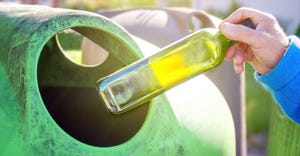Matchbox Advances New Sustainable Package and Product Designs

After 70 years in manufacturing, Matchbox is shifting toward a more environmentally conscious production and business model, beginning with its Tesla Roadster; the diecast will be made from 99% recycled content beginning in 2022. There is more to come as the Mattel brand gets with the sustainability movement. Plans now underway include moving to zero-plastic packaging; designing electronic playsets for recyclability; and ideas to encourage kids to “think green.”
These plans unfold as Matchbox reaches for its stated commitment to make all diecast cars, playsets, and packaging with 100% recycled, recyclable, or bio-based plastic content by 2030, in line with Mattel’s goals.
“We are now in the process of re-engineering several plastic components and perfecting them for use with recycled materials. This will be a holistic approach – part design and engineering, injection mold design, and manufacturing process changes. These changes will become the foundation and standards for other similar parts in the future,” says Jon Marine, Mattel’s vice president of Product Development.
The first product revamped for sustainability, the Tesla Roadster, is built from recycled zinc, recycled plastic, and stainless steel. The toymaker icon points to this product as its “blueprint for the future.”
“Matchbox products are all about inspiring kids to explore the world around them through real-life adventures. So, we’re expanding our electric vehicle representation fivefold within our die-cast assortment to reflect the actual expansion of electric vehicles. [They will not at this time be of recycled material but the packaging will be recyclable].
We’re also renaming gas stations to fuel stations and incorporating electric vehicle chargers into our playsets in hopes of accelerating positive change in our future drivers,” says Roberto Stanichi, Mattel’s global head of Vehicles.
Evolutions, both in toy vehicles and electronic playsets, come after designing and engineering the same way for decades.
“Changing the way we think, design, engineer, tool, and process these products to make them sustainable is a very significant effort. Materials cannot easily be force fit into an application that will meet our production efficiency requirements,” Marine says.
Figuring out how to transition has entailed bringing in designers, developers, and supply chain partners at manufacturing facilities.
Besides these products changes, Matchbox has begun to use zero-plastic packaging with both paper and wood fiber content that’s Forest Stewardship Council (FSC)-certified. The first toys to be newly packaged are the Matchbox Power Grabs assortment and the electric vehicle-themed five pack of cars, which will be placed in a paper foam inner tray.
Testing to determine exactly what materials to use across product lines is ongoing. For now, the company is completing a materials and packaging assessment to inform those decisions.
“This is an important first step, and we plan to share milestones and updates as they are available,” Marine says.
Fine tuning the first product –Tesla Roadster –entailed running multiple trials over months. Molding recycled plastic is not easy.
“These materials do not mold and process as well as injection mold grades. Warpage, irregularities, and surface finish defects were all overcome by the engineering team by perfecting the temperature and pressure needed to work with the recycled materials,” Marine explains.
The recycled zinc was the easiest material to work with. But most of the recycled plastic components required gate, runner, and sprue changes to the injection molds.
“Gates, runners, and sprue are used to transport the melted plastic into the cavity of the injection mold to produce a part. Changing the size of these features in the mold allowed us to solve multiple problems such as sink marks, burn marks, and parts sticking in the mold,” Marine says.
In addition to ramping up recycled content, Mattel is looking to design and engineer for recyclability.
“The new way we are consolidating electronics in playsets is a great example of how we have evolved with recyclability in mind. As we were thinking about how to design for recyclability, this was actually one of the first items we felt we could take action on.
Now electronics are easier for processors to recycle because they are bundled into one module. We are also aiming to use less screws and more snaps. And to make it easier for consumers, we will use homogenous materials that can be recycled together once consumers break them down at the end of life; even plastics of different colors, will require no further separation,” Marine says.
Improved design does not always guarantee greater diversion and recycling.
So says Stanichi, “Beyond our product enhancements we will be sharing more resources and content with consumers on how they can properly recycle our products.”
For instance, assembly and recycling instructions will accompany the electronics. And a section of the brand’s website will post further information on the brand’s sustainability efforts and how to dispose of its products.
While the company continues testing products and packaging, it’s also exploring ways to reduce energy use, carbon emissions, and waste.
“We’re in the process of conducting life cycle assessments across our product lines to determine where we can take additional steps to further reduce in each of these areas across our operations,” Stanichi says.
Will the big brand’s beginnings be a catalyst for more change? Stanichi figures it could.
“As the first brand at Mattel to announce our sustainability goal, we hope that the learnings we discover along the way will influence other brands and other toy companies to join us,” he says.
About the Author
You May Also Like




